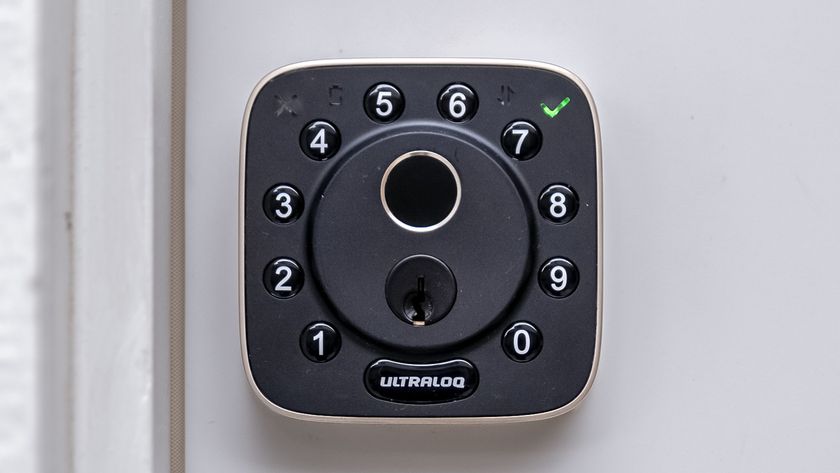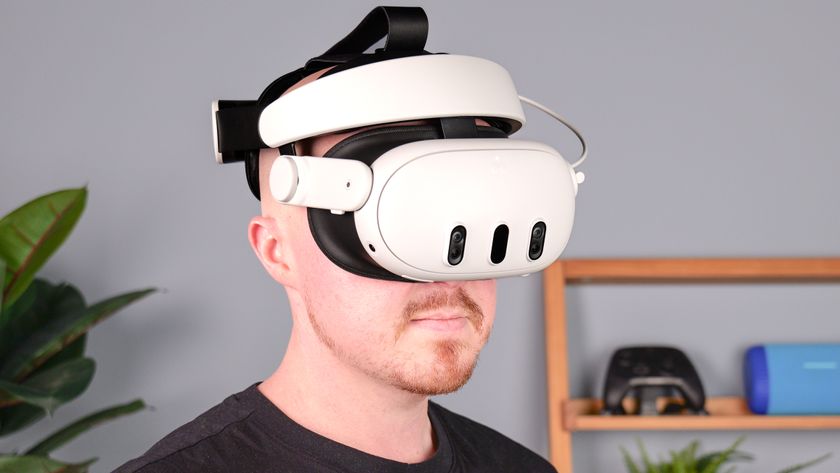Tom's Guide Verdict
Combining European fairy tales and Japanese RPGs, "Child of Light" is equal parts charming and challenging.
Pros
- +
Gameplay feels both familiar and fresh
- +
Gorgeous art
- +
Charming female protagonist
Cons
- -
Dialogue sometimes feels wordy and forced
- -
Limited character customization
Why you can trust Tom's Guide
Trapped in the shadowy dream world of Lemuria, a young girl named Aurora must find a way to save a kingdom, and herself, if she is ever to return home.
"Child of Light," available via digital download for Xbox One, PS4, Xbox 360, PS3, Wii U and Windows PC, is a game about childhood, but not just because of the protagonist's age. The game recalls fairy tales and other European folklore as well as the classic role-playing games (RPGs) and platformers that many of today's gamers grew up playing.
Gameplay

"Child of Light" is a two-dimensional side-scroller; players move from left to right, and up and down across the screen, but the game world is, for all intents and purposes, flat, without a third dimension.
Side-scrolling is often associated with jumping from platform to platform, "Mario Bros."-style, but "Child of Light" is a real platformer only in its first few minutes. After that, Aurora gains the ability to fly, which gives her much more freedom of movement.
Instead of platforms, the obstacles in the world form mazelike pathways. To navigate them, the player must solve more than a few puzzles along the way.
Aurora's firefly companion, Igniculus, is controlled via the right analog stick (or by a second player in multiplayer mode), and can pass through walls and thick vegetation to reach helpful items.
Monsters fill Lemuria, but unlike the random encounters of early "Final Fantasy" and "Pokemon" games, "Child of Light" presents enemies that players can see and sometimes avoid. You'll also find citizens of Lemuria, some of whom will join you in your quest and can be commanded in battle.
MORE: Best Gaming Desktops
Fans of RPGs, especially Japanese titles, will be familiar with the combat style in "Child of Light." Each character has health points and magic points, and can perform either a physical attack with a weapon or a magical attack that consumes magic points.
Fighting increases characters' experience, which causes them to grow levels and receive "skill points" that can unlock new attacks or statistical boosts. However, character customization options are generally far more limited than in other contemporary RPGs.
But "Child of Light" puts a spin on that comfortable formula in several interesting ways. For example, a loading bar at the bottom of the screen determines the order of attack. When a character reaches the 75 percent mark on the bar, the player can choose an attack, and when the character reaches 100 percent, the attack is performed. However, if that character gets attacked between the 75 and 100 percent mark, this "interrupts" the attack and progress on the loading bar resets itself.
This isn't entirely new. What is new is that players can slow down enemies' loading-bar progress by using Igniculus to shine light on the foes.

Igniculus can also heal your character's health, or collect heath and magic points on the screen, but he can't do all three things at once. While you're choosing attacks with the left analogue stick, you'll also constantly be steering Igniculus all across the battlefield with the right stick.
The loading bar and Igniculus add a whole new level of strategy, and even a kind of spatial reasoning, to the traditional, turn-based RPG fight.
You'll need to forecast where your enemies will be on the bar as your next character gets ready to attack. Do you use Igniculus to slow one of them down, or do you let the enemy's loading bar speed up to the window of vulnerability, so that you can interrupt the enemy's next attack with yours?
Story
The story begins as Aurora, beloved youngest daughter of the Duke of Austria, falls into a sleep so deep that, to her father and the rest of the world, it appears she has died.
Aurora awakens in a strange, shadowy realm called Lemuria. She is frightened and alone until she meets her glowing blue firefly companion Igniculus, acquires a sword and, soon afterward, a pair of fairy wings. Now with the ability to defend herself, Aurora learns that if she wants to return home, she and her fast-growing group of friends and allies must rescue the sun, moon and stars from the Dark Queen Umbra, whose rule has thrown Lemuria into darkness.
"Child of Light" clearly draws inspiration from European fairy tales, not least because nearly every single line of dialogue is in rhyming verse. Characters speak either in couplets or ABCB quatrains (except one party member whose inability to rhyme is a source of bemusement for the others).

The rhyming is generally impressive, and meshes very well with the charming and fanciful feel of "Child of Light," but the meter is rarely as strict as the rhymes, making many lines feel awkward and stilted.
The attempt to rhyme also makes the dialogue far wordier than it had to be. Overall, the rhyming is an impressive endeavor and usually adds to the game experience, but at times we wondered if it was really worth it.
The story very intentionally evokes fairy tales and other children's media, and save for some mild fantasy violence, "Child of Light" is absolutely safe for kids to play. But that doesn't mean the game isn't for adults.
Action stories commonly feature more male characters than female ones, even when the main character herself is female. "Child of Light" bucks that trend. Aside from Aurora herself, the rulers of Lemuria are all women, as are the majority of party members.
MORE: Our Favorite Gaming Keyboards
And in this game, males occupy the roles stereotypically assigned to female characters in similar titles — the small magical companion, the magic-wielding party member and the dying loved one who must be saved.
The female characters don't automatically make "Child of Light" good, but they do make it an important example of female representation in mainstream video games. The ladies of "Child of Light" are just part of a rich, moving video-game experience.
Graphics and art
From its layered, two-dimensional perspective to its sidescrolling nature to its beautiful watercolor effects, "Child of Light" looks like a children's storybook.

Despite the game's overall Western aesthetic, the creative team also drew from Japanese RPGs and animation, specifically "Final Fantasy" artist Yoshitaka Amano and the art of Hayao Miyazaki's Studio Ghibli.
Between the elaborate background landscapes and the detailed foreground elements such as trees, columns and plants, we often found our eyes jumping around the screen. Yet Aurora's excellent character design always brought our eyes back to her. Her golden crown, yellow shift and, most of all, gently flowing red hair give her a vivid and distinct appearance that players won't soon forget.
Music and audio
Modern piano makes its influence felt in "Child of Light," but the ethereal music also draws inspiration from Japanese RPG music, particularly that genre's strong melodies and easily loopable structure.
But it's the attention to detail that makes the game's audioscape so compelling. We loved the deep gong of the village bells, the heavy scrape of Aurora's sword and, most of all, the patter of Aurora's bare feet as she makes her way through Lemuria.
Bottom Line
"Child of Light" is a game about childhood, but it is not childish. The stunning art, compelling gameplay and charming story come together to create a game that younger children and adults alike will love.
Jill Scharr is a creative writer and narrative designer in the videogame industry. She's currently Project Lead Writer at the games studio Harebrained Schemes, and has also worked at Bungie. Prior to that she worked as a Staff Writer for Tom's Guide, covering video games, online security, 3D printing and tech innovation among many subjects.












-
RebootEDC It's charming and wonderful, indeed, but far from challenging. It's strightforward and, somehow, easy and short. But since the very begining you fall in love instantly with the game and with Aurora's cuteness.Reply -
poweronpub @RebootEDC were you playing on an easier setting? In our own review (here: http://www.poweronpub.com/child-of-light-review/) we very briefly mention playing on a difficult setting, but maybe it should've been covered more. The game can be a challenge if played on a harder mode, in my opinion.Reply





